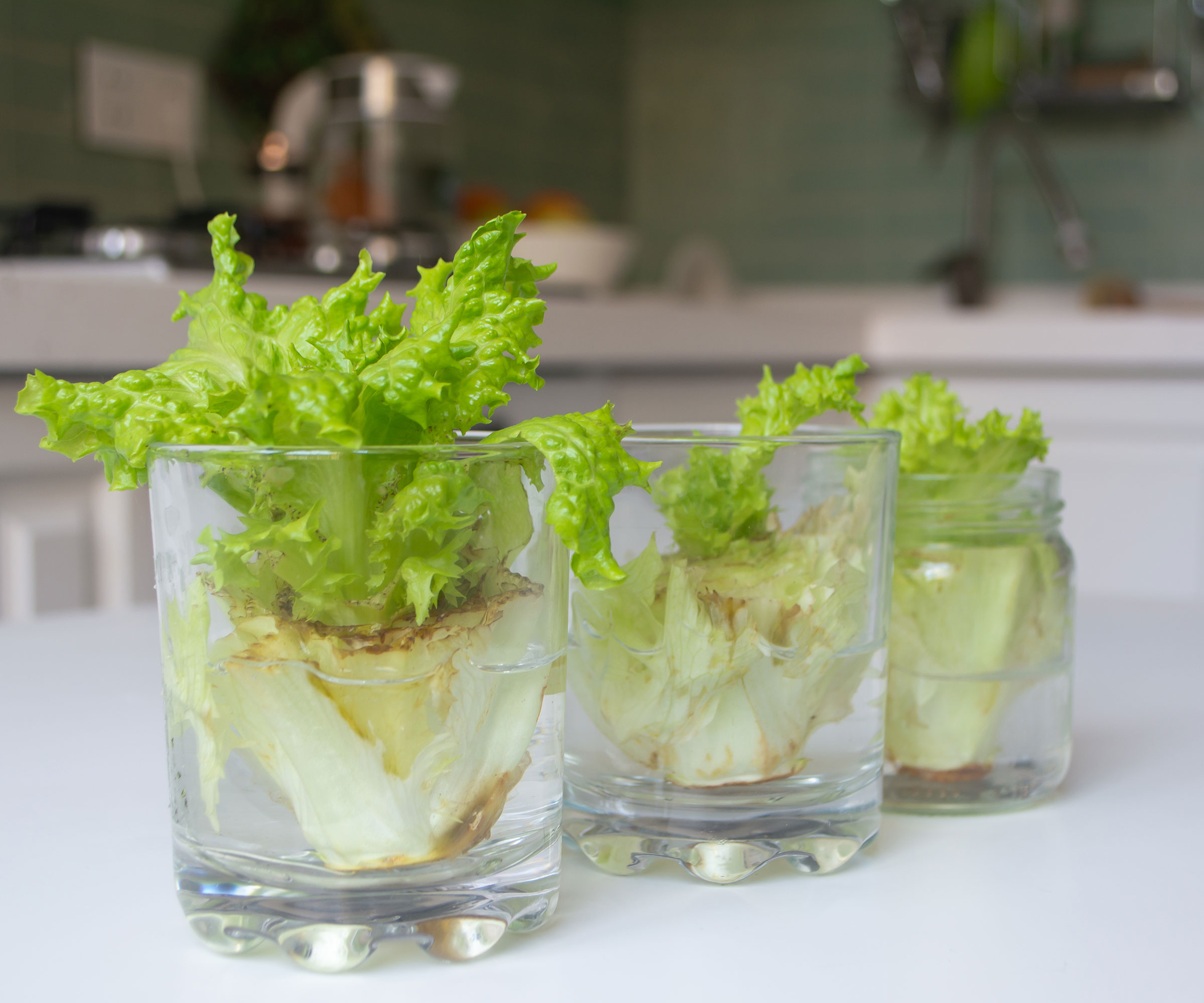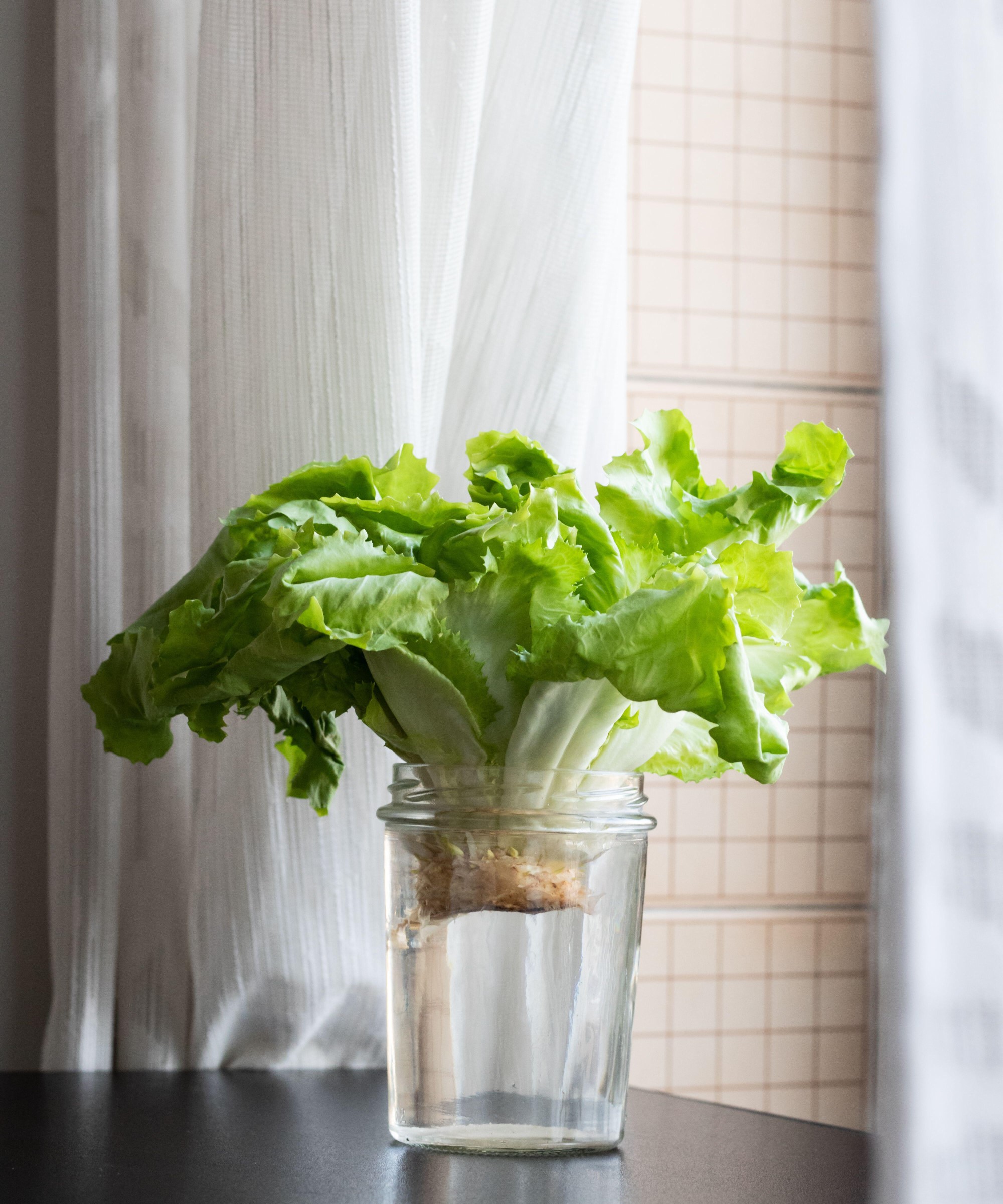How to grow lettuce from scraps – 6 simple steps for a swift harvest
Get an extra crop of leaves from your lettuce for free in as little as 10 days


Growing lettuce from scraps is a simple and economical way to get tasty leaves from a section of the plant that many would throw in the trash. In just a few easy steps, you can successfully grow lettuce leaves in water from the off-cuts of a homegrown or store-bought lettuce.
Just don't go in expecting to get a full new head of lettuce by growing them in water. You will, however, get a nice selection of leaves that can be ideal for salads, sandwiches, or garnish. You can even involve your children as it makes a fun project for the family.
If you know how to grow lettuce, then re-growing leaves from scraps allows you to get some extra life out of your homegrown heads. Alternatively, it can merely be a budget-friendly way to get a few extra delicious lettuce leaves, with little effort required.

Change the water every couple of days as the leaves grow

Drew is a former professional gardener who has worked in historic gardens across the UK and also specialized as a grower of vegetables, fruit, and herbs. He has successfully grown a range of vegetables from scraps in his own kitchen, including lettuce.
How to grow lettuce from scraps in water
You need very little time or equipment to resprout a lettuce and it can take less than two weeks to get a new harvest of delicious leaves. The method can work for all lettuces, so whether you want to know how to grow Romaine lettuce in water or how to grow iceberg lettuce from scraps, the following advice applies.
It is thought that it is easiest to grow Romaine lettuce in water, however, the method will work with any lettuce that comes as a head and they can visibly start growing in as little as three days. It will not, however, work with individual leaves.
- Cut the leaves off from the stem around 1-2 inches from the bottom.
- Find a shallow clear dish and fill with half an inch of water.
- Sit the stem of the lettuce base-down submerged in the water.
- Place the container on a light windowsill – but keep out of full sun.
- Change the water every two days.
- Once the leaves get around a few inches tall, after 10-12 days, then that is the time to harvest the lettuce leaves.
You can cut off the leaves with a pair of scissors or a knife and use the leaves immediately after harvesting. The small leaves may taste more bitter than the leaves on the original lettuce did.
After about a two-week timeframe the plant is not then able to sustain in the water and its growth will deteriorate. Following on, the leaves will turn even more bitter or the lettuce will start to bolt.
Design expertise in your inbox – from inspiring decorating ideas and beautiful celebrity homes to practical gardening advice and shopping round-ups.

Only the base of the plant needs to be submerged in the water
How to grow a lettuce from scraps in soil
If you do want to continue growing your lettuce after that two-week period, the only option available to you is to plant it in soil. This can either be done outdoors in the ground, raised bed, or a pot, or you can grow lettuce indoors on a sunny windowsill inside the home.
I have seen articles on doing this and also people on YouTube planting sprouted lettuces, however I feel there is no guarantee that the lettuce will grow happily – as it does not sprout sizable roots on the base in water. Roots take up water and nutrients from the soil and, without a good root structure, the leaves are likely to wilt and the plant to die.
Nevertheless, if you do wish to investigate for yourself, then plant lettuces so they are around 6-10 inches apart in a free-draining soil and in a sunny spot. Lettuces grow best at temperatures of between 60-65˚F and can be prone to bolting when it is sunny and gets warmer than 80˚F.
To plant the lettuce you have grown from scraps, make a deep hole and push the stem into the soil so the base of the leaves sit half an inch above the soil. Press the soil around the plant and water well. Ensure to water the crop regularly and keep them weed-free for optimum growth. If you're also interested in growing onions from scraps, these can be planted out in your backyard or in pots too.
You can grow lettuce on a sunny windowsill in the house – ideally one that can provide at least four hours of sun each day. Indoor grow lights, such as this LED grow light from Amazon, can be used to supplement natural lighting if required, making it possible to grow lettuce from scraps indoors even through the winter months.

Drew has worked as a writer since 2008 and was also a professional gardener for many years. As a trained horticulturist, he worked in prestigious historic gardens, including Hanbury Hall and the world-famous Hidcote Manor Garden. He also spent time as a specialist kitchen gardener at Soho Farmhouse and Netherby Hall, where he grew vegetables, fruit, herbs, and cut flowers for restaurants. Drew has written for numerous print and online publications and is an allotment holder and garden blogger. He is shortlisted for the Digital Gardening Writer of the Year at the 2025 Garden Media Guild Awards.